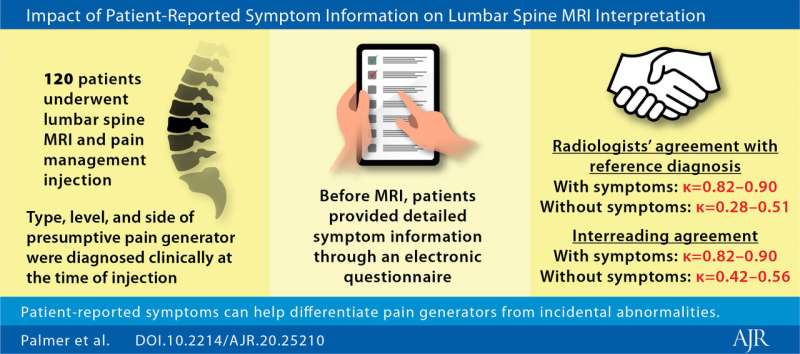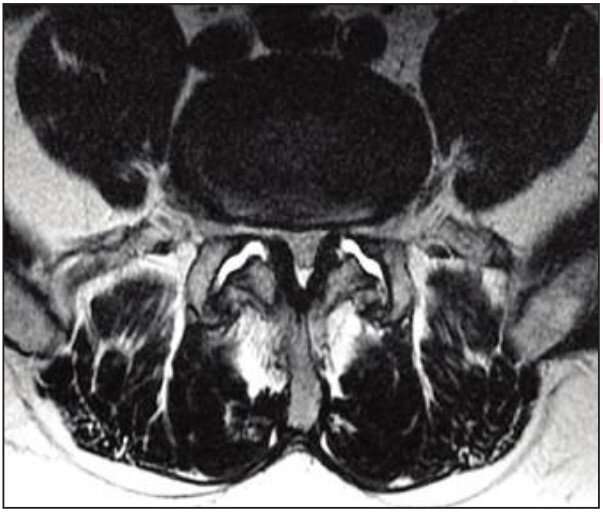Impact of patient-reported symptom information on lumbar spine MRI Interpretation

According to an open-access article in ARRS' American Journal of Roentgenology (AJR), in lumbar spine MRI, presumptive pain generators diagnosed using symptom information from brief electronic questionnaires showed almost perfect agreement with pain generators diagnosed using symptom information from direct patient interviews.
"Using patient-reported symptom information from a questionnaire, radiologists interpreting lumbar spine MRI converged on diagnoses of presumptive pain generators and distinguished these from incidental abnormalities," wrote Rene Balza of the department of radiology at Massachusetts General Hospital.
Between February and June 2019, Balza and colleagues recruited 120 participants (70 men, 50 women; median age 64) from patients referred for lumbar spine injections; the participants completed electronic symptom questionnaires before injections. Six radiologists diagnosed pain generators in three research arms:
- MRI studies reviewed with symptom information from questionnaires;
- MRI studies reviewed without symptom information;
- MRI reports.

According to the Massachusetts General Hospital researchers' results: "Radiologists' agreement with reference diagnoses for presumptive pain generator type, level, and side on lumbar spine MRI was almost perfect when knowing symptoms (κ=0.82-0.90), versus fair-moderate without symptom information (κ=0.28-0.51) (p < .001). Interreading agreement was almost perfect with symptoms (κ = 0.82-0.90), versus moderate without symptoms (κ=0.42-0.56) (p < .001)."
Diagnostic certainty levels were highest for radiologists performing injections—"significantly higher for MRI review with symptom information versus without symptom information, the authors of this AJR article added.
More information: Rene Balza et al, Impact of Patient-Reported Symptom Information on Agreement in the MRI Diagnosis of Presumptive Lumbar Spine Pain Generator, American Journal of Roentgenology (2021). DOI: 10.2214/AJR.20.25210
















